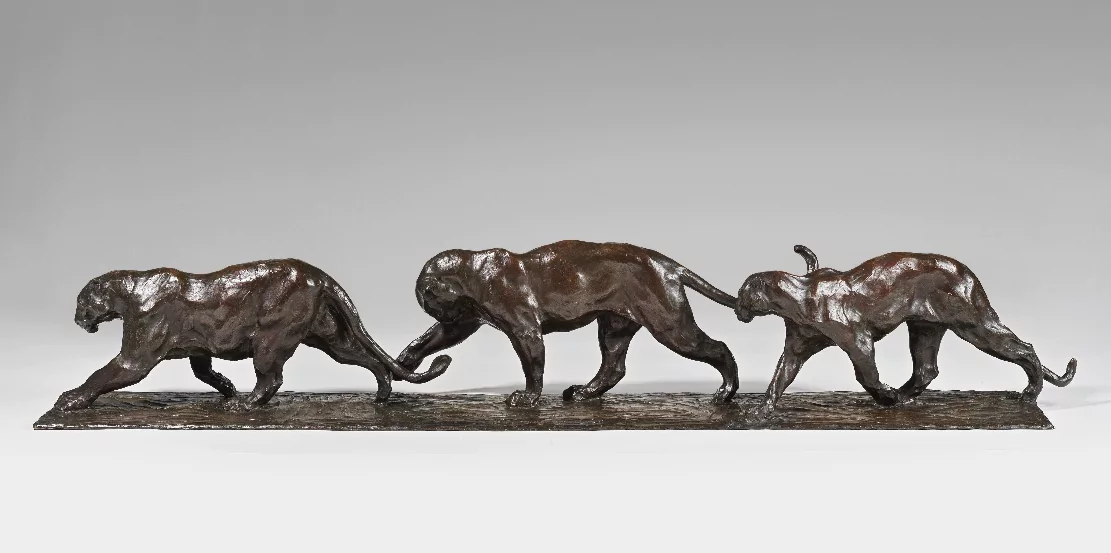An exceptional bronze sculpture by Rembrandt Bugatti will go under the hammer for the first time by Bonhams. Trois panthères marchant, circa 1905, is estimated to fetch between €3.5 and €5.5 million.
Bonhams Cornette de Saint Cyr will offer the bronze by Rembrandt Bugatti in the Impressionist and Modern Art sale on Wednesday 5th June.
The work, Trois panthères marchant, is a unique piece that was cast in bronze by Adrien-Aurélien Hébrard and shows three walking panthers together. Although the work has been exhibited in all of the artist’s major exhibitions, it has never been seen on the market before.
“This unique piece is the most iconic sculpture by the artist, who had a brief but highly productive career,” says Bénédicte van Campen, Bonhams’ Senior International Specialist. “Imposing in size and with a beautiful patina, this is the only cast which presents the three panthers together. Understandably, this masterpiece is the cover of the catalogue raisonné of the artist’s work by Véronique Fromanger.”
Rembrandt’s unique approach to sculpture
Born in 1884, the Italian sculptor Rembrandt Bugatti chose to focus on sculpting animals. Using exotic models found in the zoos of Paris and Antwerp, his work featured animals such as ant-eaters, tapirs, Marabou storks, yaks, secretary birds, elephants, lions and kangaroos, introducing them into the history of European art as sculpted subjects for the first time.
After a period of intense observation, Bugatti would create models for nearly all his sculptures directly in front of the animal itself. The artist’s extraordinary intuition for the right moment made it possible for him to capture each animal’s most expressive gesture, thus creating incomparably lifelike portraits.
Panthers were “his companions in life and work”. After having met with the zookeepers of Jardin des Plantes in Paris, Bugatti felt closer to these animals which he thought were less aggressive and behaved more naturally than humans. He took the time to observe them every day and worked in situ in front of them.
As Véronique Fromanger writes in her catalogue raisonné, Rembrandt Bugatti sculpteur, répertoire monographique: “Bugatti captures a single moment in time by analysing and synthesising, experiencing a permanent face à face with his model, during which he observes the animal with all of his intellectual and sensual capabilities, absorbing senses, sounds and smells. This enables him to fix the model in his mind, imprinting it on his visual, sensory and haptic memory, before modelling in multi-dimensional form.”
Bugatti did not use preparatory sketches or photographs, and avoided reworking the sculptures at the studio or during casting.
Join the Monaco Life community – sign up for the Monaco Life newsletter, and follow us on Threads, Facebook, Instagram, LinkedIn and Tik Tok.
Photo source: Bonhams
